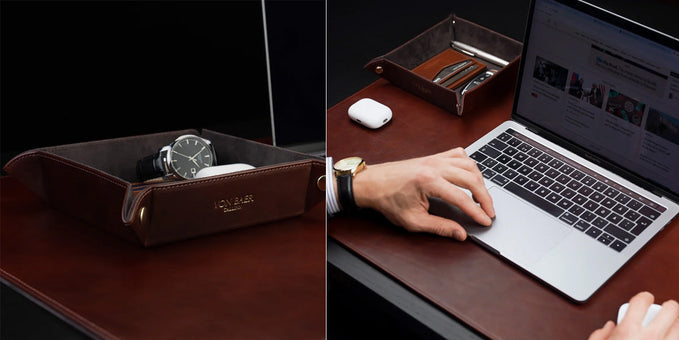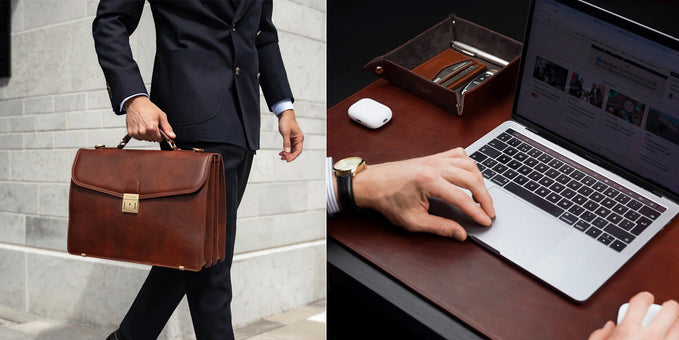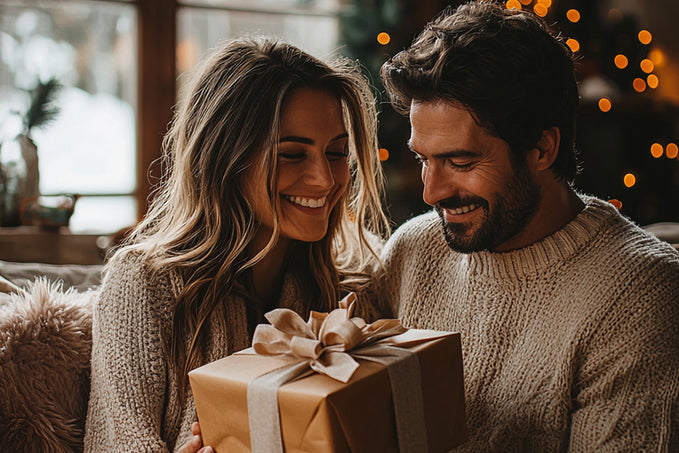How Are Leather Wallets Made?

A quality leather wallet can make your life complete with a stylish and practical way of carrying your money, cards, and ID.
But how is a leather wallet made?
And what materials make the best wallet?
Well, read on to find out.
Real Leather Comes in Different Grades of Quality
Not all leather is the same, so it's important you choose the right grade to avoid ending up with a low quality wallet.
The highest grade of real leather is known as full-grain leather, and it's what we recommend you look for in your wallet.
This is because the beautiful leather grain is retained, it's the most durable grade (important for a daily use product), and it develops a wonderful patina over time.

At Von Baer we actually go even further than just "full-grain", using even more strict criteria when selecting our leather, which we have named "Cuoio Superiore", and requires the following:
- Superior Hides: Must be made from Bos taurus cattle, raised on nutrient-rich grasslands of Western Europe, enhancing the collagen structure for superior durability.
- Highest Quality Grades: Even full-grain has differences in quality, so we select the best-grade full-grain leather.
- Extended Tanning Process: We use a 72-hour plant-based tanning process, far longer than the typical 8-hour process, which enhances strength and texture.
- Handpicked Italian Tanneries: We handpicked the Tuscany region's finest tanneries, known for their heritage and exceptional craftsmanship.
- Natural Conditioning: Our leather uses natural oils and tallow, avoiding synthetic chemicals, maintaining leather's unique qualities.
- Ethically Sourced: Hides must be a byproduct of the food industry, promoting sustainability.
Shop Von Baer high-quality full-grain leather wallets here.
You can learn more about full grain leather here, as well as a guide to leather types here.
Tanning and Treatment

Image: Travel Wallet (link)
The process of making a hide into a beautiful piece of leather is called tanning.
The two main options are vegetable tanning and chrome tanning.
Vegetable tanning is by far the superior choice of the two, with the only disadvantage being that it takes more time and, therefore, increases the price of the items. It uses natural materials, is better for the environment, encourages a rich patina, and is very durable.
Chrome tanning, though faster and therefore cheaper, uses harsh industrial chemicals that are difficult to dispose of in a safe way. The resulting leather is also not as beautiful and does not last as long.
Careful Manufacturing Process

Cutting and Crafting
Skilled artisans cut the leather into precise shapes that can be assembled into the finished wallet. The cuts must be clean and accurate and should optimize the natural grain of the leather.
Trims and definitions are created using stamps.
Stitching: The Backbone of Durability
Stitching attaches the pieces in the correct configuration, but it does more than that too. Done properly, it reinforces the structure of the wallet, improves the look of it, and increases its durability.
Here's a video showing which sewing machine is best for leather.
Finishing Touches
In order to wind up with a refined, finished look, the edges of the wallet are then smoothed (called “edging”), and sometimes burnished to seal the leather against moisture and produce a sleek, beautiful finish.
Any hardware, such as zippers or snaps, are also added at the appropriate stage, depending on the design.
Each product is fully inspected after it's been assembled, making sure the edges are up to standard, and it contains all of the right sections.
You’ll Feel The Difference
When you first pick up a quality wallet, slide it into your pocket for the first time, or take it out under the appreciative eye of a dinner partner or business associate, you will feel the full effect of the quality.
The texture, weight, and stylish impact will complement even your best clothing, and will elevate any situation into a moment of pleasure.
Quality leather wallets are both accessories and companions through your professional milestones.
Why This Matters
A wallet reflects your personal taste, style, and level of success.
That durability and style, the craftsmanship and attention to detail – these each reflect upon you as well, signaling that you, too, have the traits and habits of a successful person, or one who soon will be.
What are the different types of leather finishes, and how do they affect the wallet's appearance and durability?
Leather Finishes Explained
Leather can be finished in a variety of ways, each one having its effect not only on the look, but also on the durability, appearance, and requirements for care. The most common finishes are:
- Aniline Leather: Using soluble dyes, this technique allows the natural surface of the leather to show, including the unique markings of the grain. It results in a natural look, but can be more vulnerable to stains. This is the finish on all Von Baer products.
- Semi-Aniline Leather: This is the halfway point between the technique above and the one below. It is a little more durable than aniline leather, due to a thin protective coat that helps to repel water and staining – but the natural leather characteristics still show through.
- Pigmented Leather: Using a surface coating that contains pigments, this technique both protects from scratching and fading, and results in a more uniform – though less natural – finished appearance.
How should one care for a leather wallet to ensure its longevity?
Leather Wallet Care
There are four major things to keep in mind when it comes to keeping your wallet in the best possible shape, for the longest possible time.
- Keep it dry: Avoid exposing it to water. If the wallet does get wet, you should dab it gently with a clean, soft cloth and let it dry naturally, away from direct sunlight, heat, and cold.
- Clean it regularly: Remove surface dirt with a soft brush or cloth. You can also use a specially designed leather cleaner.
- Condition it: Apply a quality leather conditioner (here's our choice) two to three times a year. Set a calendar alert and keep some conditioner on hand, so you don’t forget. It only takes a minute, and your wallet will last much longer.
- Avoid overstuffing: Your wallet was designed to hold a certain number of things. If you stuff extra things in it, the leather can distort and may not return to its original shape. This can result in lost cards and cash.
Can a wallet’s design impact its functionality? If so, how?
Design Versus Functionality
A wallet’s design has a large impact on functionality. When choosing a wallet, you’ll want to pay attention to:
- Size and Profile: Slim wallets are comfortable and reduce bulk but may offer less space.
- Compartmentalization: More compartments mean more items and allow better organization, but they also add to the wallet's thickness and weight.
- Ease of Access: Designs that open easily, while keeping your items secure when closed, are the best. Put the cards you use most, in the easiest places to find.
I always think it's best to have more than 1 wallet per occasion, so you can adapt to what you want to carry. For example, I like to carry my slim card holder when I'm attending a wedding or I'm on a night out, whereas I prefer my larger bifold wallet for day-to-day activities.
Choosing Yours
Your wallet will be with you through thick and thin, so consider both the look at the time of purchase, and what it will look like as it ages with use.
Consider what its attributes signal to others about your attributes.
Choose a design and size that best suits your lifestyle and wallet needs.
Learn more about leather wallets with the links below:

Author: Albert Varkki
Albert Varkki is the co-founder of Von Baer. He understands leather products as a consumer, supplier, and a manufacturer, helping you with the inside knowledge you need, to choose the perfect leather product for you.
We strive for the highest editorial standards, and to only publish accurate information on our website.
Leave a Comment
Your email address will not be published.







